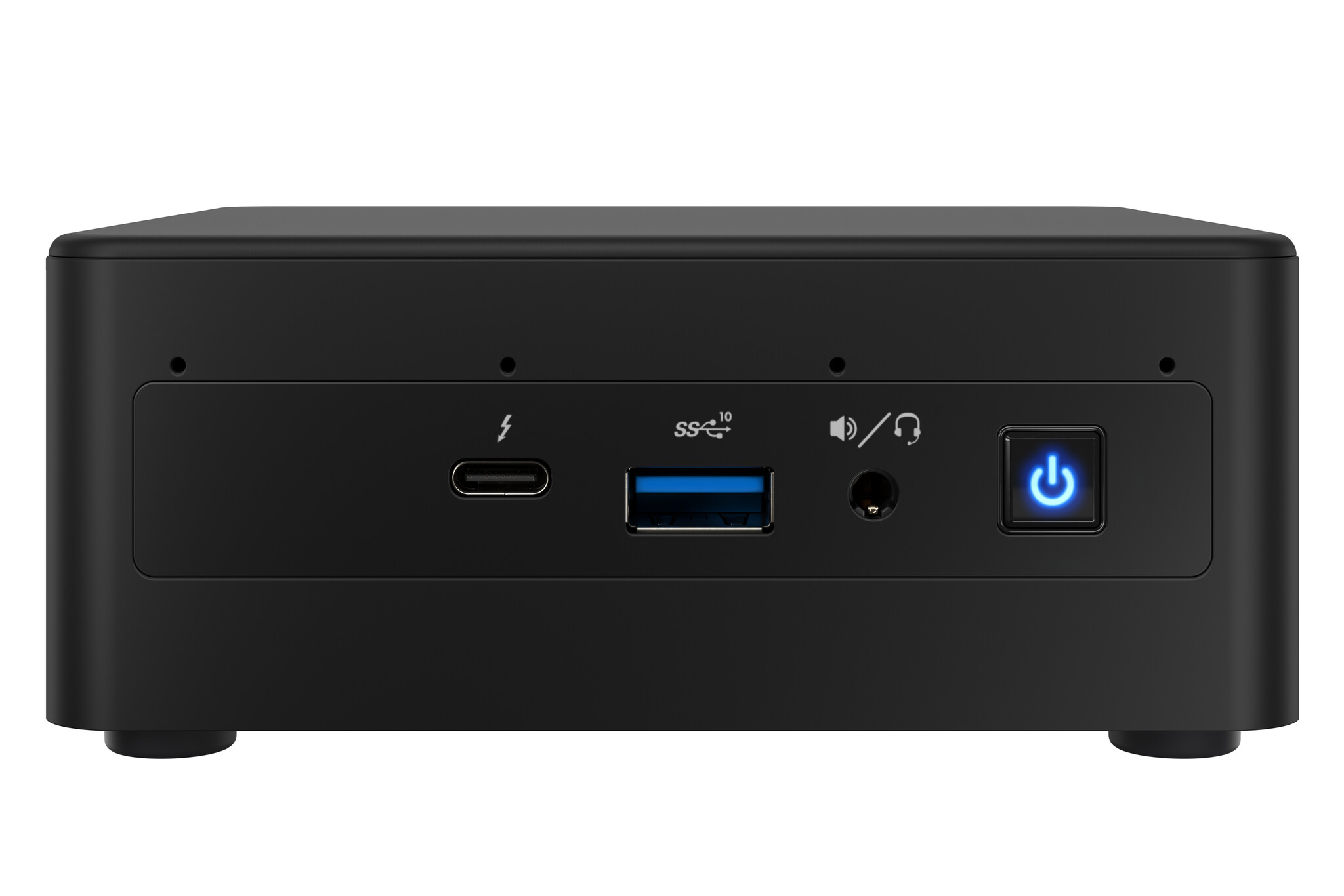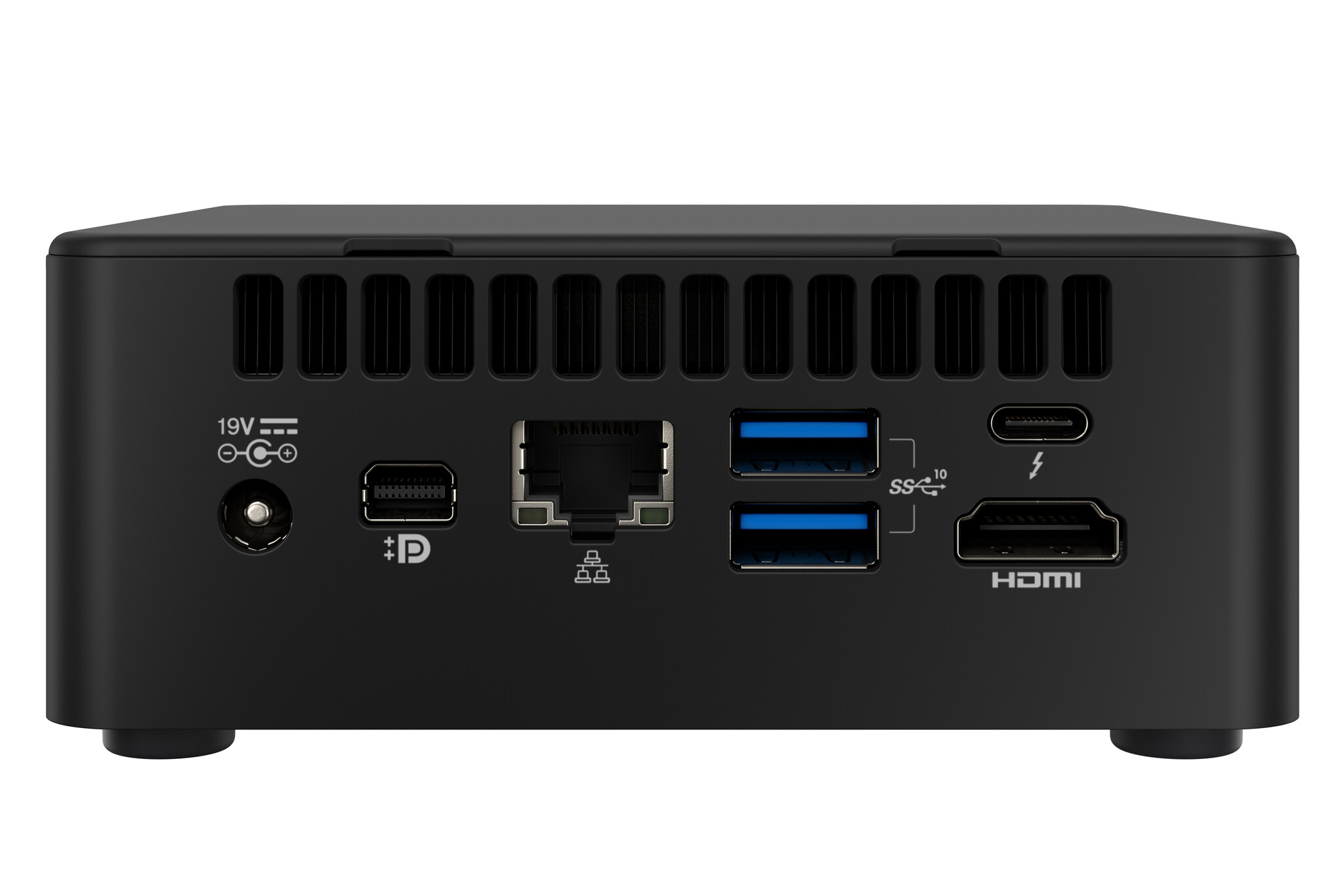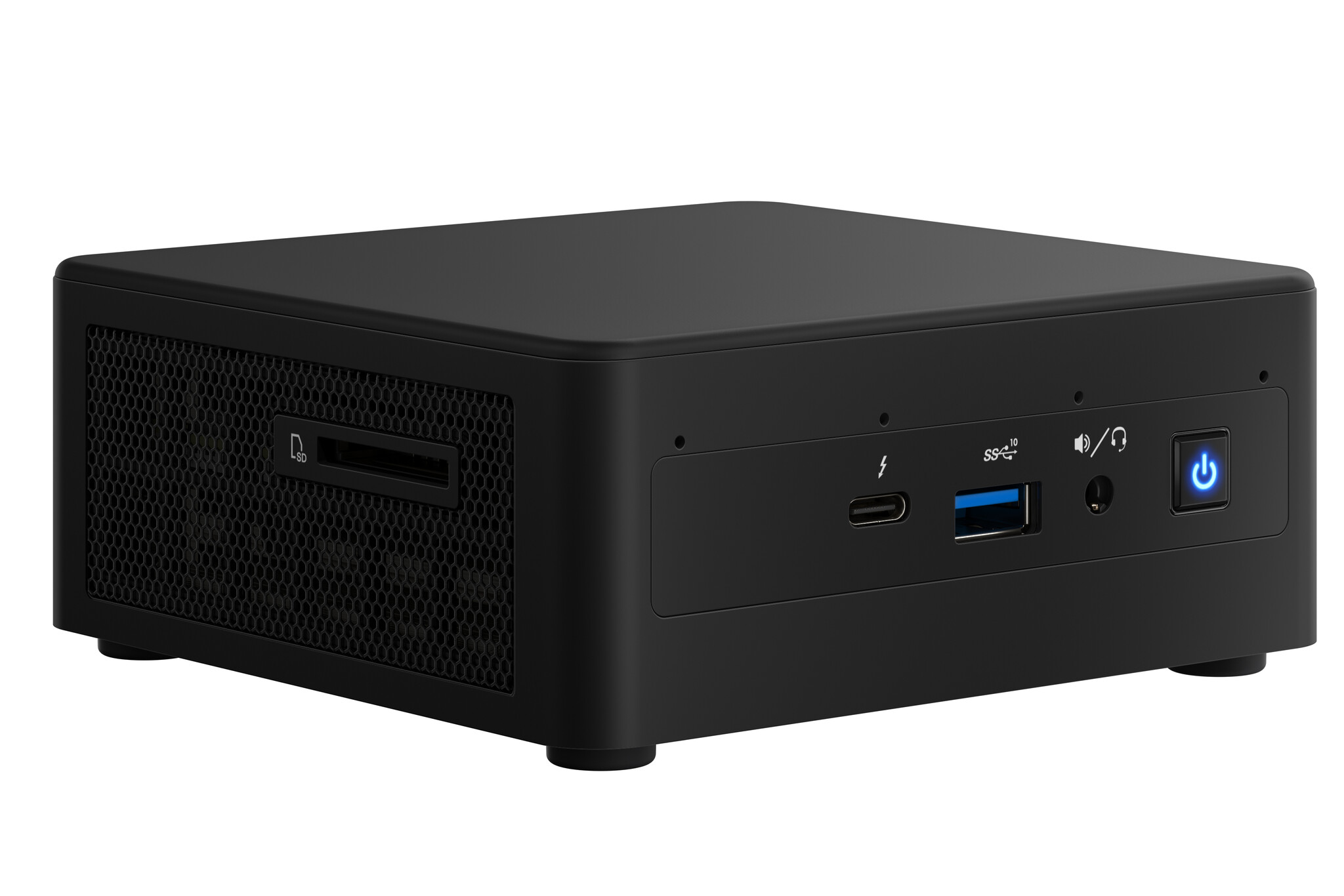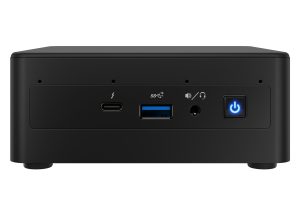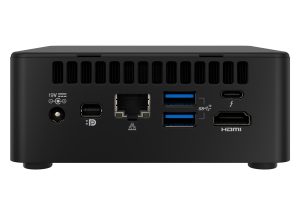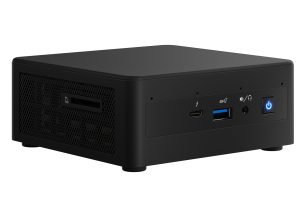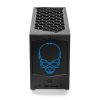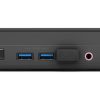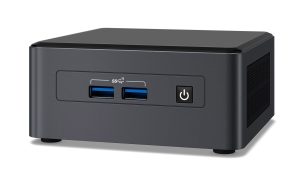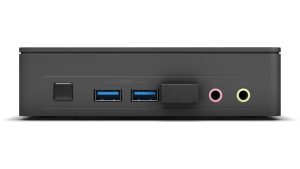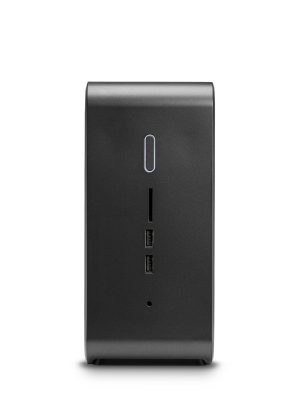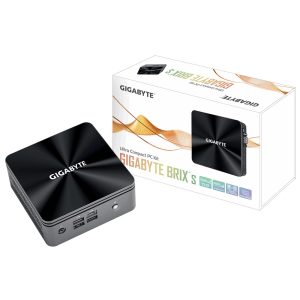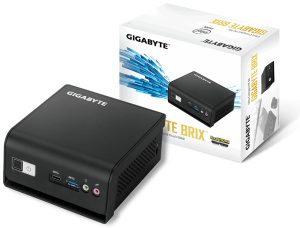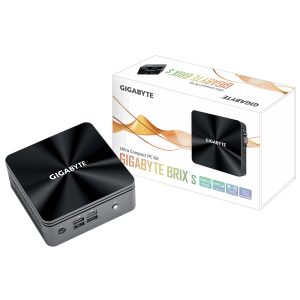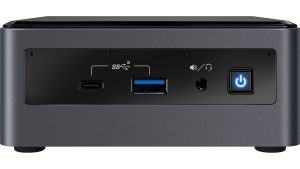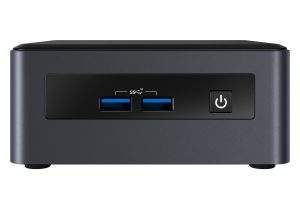Intel NUC 11 Performance kit UCFF Sort i3-1115G4
3.497,50 kr. inkl. moms (ex. moms 2.798,00 kr.)
Black I3-1115G4
Ikke på lager
Giv mig besked når varen kan købes

Intel® Virtualization Technology for Directed I/O (VT-d)
Intel® Virtualization Technology for Directed I/O (VT-d) continues from the existing support for IA-32 (VT-x) and Itanium® processor (VT-i) virtualization adding new support for I/O-device virtualization. Intel VT-d can help end users improve security and reliability of the systems and also improve performance of I/O devices in virtualized environments.
Intel® Virtualization Technology (VT-x)
Intel® Virtualization Technology (VT-x) allows one hardware platform to function as multiple “virtual” platforms. It offers improved manageability by limiting downtime and maintaining productivity by isolating computing activities into separate partitions.
Intel® AES New Instructions
Intel® AES New Instructions (Intel® AES-NI) are a set of instructions that enable fast and secure data encryption and decryption. AES-NI are valuable for a wide range of cryptographic applications, for example: applications that perform bulk encryption/decryption, authentication, random number generation, and authenticated encryption.
Max Turbo Frequency
Max Turbo Frequency is the maximum single-core frequency at which the processor is capable of operating using Intel® Turbo Boost Technology and, if present, Intel® Turbo Boost Max Technology 3.0 and Intel® Thermal Velocity Boost. Frequency is typically measured in gigahertz (GHz), or billion cycles per second.
Intel vPro® Platform Eligibility
The Intel vPro® platform is a set of hardware and technologies used to build business computing endpoints with premium performance, built-in security, modern manageability and platform stability.
Intel® Rapid Storage Technology
Intel® Rapid Storage Technology provides protection, performance, and expandability for desktop and mobile platforms. Whether using one or multiple hard drives, users can take advantage of enhanced performance and lower power consumption. When using more than one drive the user can have additional protection against data loss in the event of hard drive failure. Successor to Intel® Matrix Storage Technology.
Intel® HD Audio Technology
Intel® High Definition Audio (Intel® HD Audio) is capable of playing back more channels at higher quality than previous integrated audio formats. In addition, Intel® HD Audio has the technology needed to support the latest and greatest audio content.
Integrated Graphics
Integrated graphics allow for incredible visual quality, faster graphic performance and flexible display options without the need for a separate graphics card.
TPM
Trusted Platform Module (TPM) is a component on the desktop board that is specifically designed to enhance platform security above-and-beyond the capabilities of today’s software by providing a protected space for key operations and other security critical tasks. Using both hardware and software, the TPM protects encryption and signature keys at their most vulnerable stages – operations when the keys are being used unencrypted in plain-text form.
Intel® Platform Trust Technology (Intel® PTT)
Intel® Platform Trust Technology (Intel® PTT) is a platform functionality for credential storage and key management used by Windows 8* and Windows® 10. Intel® PTT supports BitLocker* for hard drive encryption and supports all Microsoft requirements for firmware Trusted Platform Module (fTPM) 2.0.
| Vægt | 1,0000 kg |
|---|---|
| Indbygget processer | Ja |
| Brand | Intel |
| State | Default |
| Processorproducent | Intel |
| Processorserie | Intel® Core™ i3 |
| Processormodel | i3-1115G4 |
| Processorkerner | 2 |
| Processortråde | 4 |
| Processor litografi | 10 nm |
| Processor boost frekvens | 4,1 GHz |
| Processor-cache | 6 MB |
| Thermal Design Power (TDP) | 40 W |
| Hukommelsesbåndbredde understøttet af processor (maks.) | 51,2 GB/sek. |
| CPU-konfiguration (maks.) | 1 |
| Hukommelses slots type | SO-DIMM |
| Antal hukommelsesstik | 2 |
| Antal DIMM-slots | 2 |
| Maksimal intern hukommelse | 64 GB |
| Understøttede hukommelsesclock-hastigheder | 3200 MHz |
| Understøttede hukommelsestyper | DDR4-SDRAM |
| Hukommelseskanaler | To-kanals |
| Hukommelsesbåndbredde (maks.) | 51,2 GB/sek. |
| Udtageligt hukommelseskortstik | SDXC with UHS-II support |
| Fejlkorrigerende kode | Ingen |
| Understøttet datalagringsdrev typer | HDD & SSD |
| Understøttede lagerdisk størrelser | M.2,2.5 |
| Antal understøttede lagerdiske | 2 |
| On-board grafikkort | Ingen |
| Grafikadapter familie | Intel |
| On-board grafikkort, model | Intel® UHD Graphics |
| Antal understøttede skærme | 4 |
| Ethernet LAN | Ja |
| Wi-Fi | Ja |
| Bedste Wi-Fi standard | Wi-Fi 6 (802.11ax) |
| WLAN-controller model | Intel Wi-Fi 6 AX201 |
| LAN Kontroller | Intel I225-V |
| Bluetooth | Ja |
| Antal HDMI-porte | 1 |
| Ethernet LAN-porte (RJ-45) | 1 |
| HDMI-version | 2.0b |
| Antal SATA III-stik | 2 |
| Antal USB-porte | 7 |
| PCI Express slots version | 4.0 |
| Kabinettype | UCFF |
| Produktfarve | Sort |
| Produkttype | Mini PC barebone |
| LED-indikatorer | Ja |
| ARK ID | 228584 |
| Status | Launched |
| Motherboard form faktor | UCFF |
| Antal understøttede processorer | 1 |
| Trusted Platform Module (TPM) | Ingen |
| Lyd-output kanaler | 7.1 kanaler |
| Forbruger infrarød Rx-sensor | Ja |
| Kompatible operativsystemer | Windows 10, 64-bit* |
| Automatiseret sporingssystem til vareklassificering (CCATS) | G157815L2 |
| Eksportkontrolklassisfikationsnummer (ECCN) | 5A992C |
| Berettigelse til Intel® vPro™ platform | Ingen |
| Intel HD Audio Teknologi | Ja |
| Indlejret tilgængelige muligheder | Ingen |
| Intel® Rapid Storage Teknologi | Ja |
| Intel® AES Nye Instruktioner (Intel® AES-NI) | Ja |
| Intel® Virtualization Technology for Directed I/O (VT-d) | Ja |
| Intel® VT-x with Extended Page Tables (EPT) | Ja |
| Idle status | Ja |
| Intel® Trusted Execution Teknologi | Ingen |
| Intel® Stabil Billede Platformsprogram (SIPP) | Ingen |
| Intel® Platform Trust Technology (Intel® PTT) | Ja |
| Intel® Virtualization Technology (VT-x) | Ja |
| Harmoniseret systemkode (HS) | 84713000 |
| Strømforsyningstype | Ekstern AC-adapter |
| Udgangsspænding for vekselstrømsadapter | 19 V |
| Driftstemperatur (T-T) | 0 – 35 °C |
| Opbevaringstemperatur (T-T) | -20 – 60 °C |
| Bredde | 117 mm |
| Dybde | 112 mm |
| Højde | 51 mm |
| Yderligere headere | CEC, USB3.1, USB2.0, FRONT_PANEL, RGB |
| Antal SATA stik | 2 |
| HDD-størrelse | 2.5" |
| DC indgangsspænding | 19 V |
| Lanceringsdato | Q2'22 |
| Product family | NUC |
| Understøttede Windows-operativsystemer | Windows 11 x64, Windows 10 x64 |
| DC-in-stik | Ja |
| Processorgeneration | 11th gen Intel® Core™ i3 |
| Antal USB 3.2 Gen 2 (3.1 Gen 2) type-A-porte | 3 |
| Antal mini DisplayPorts | 1 |
| DisplayPort-version | 1.4 |
| SSD-formfaktor | M.2 |
| Diskret grafikadaptermodel | Ikke tilgængelig |
| Antal Thunderbolt 3-porte | 2 |
| M.2-kortslot (opbevaring) | 2280 |
| Strømledning inkluderet | Ja |
